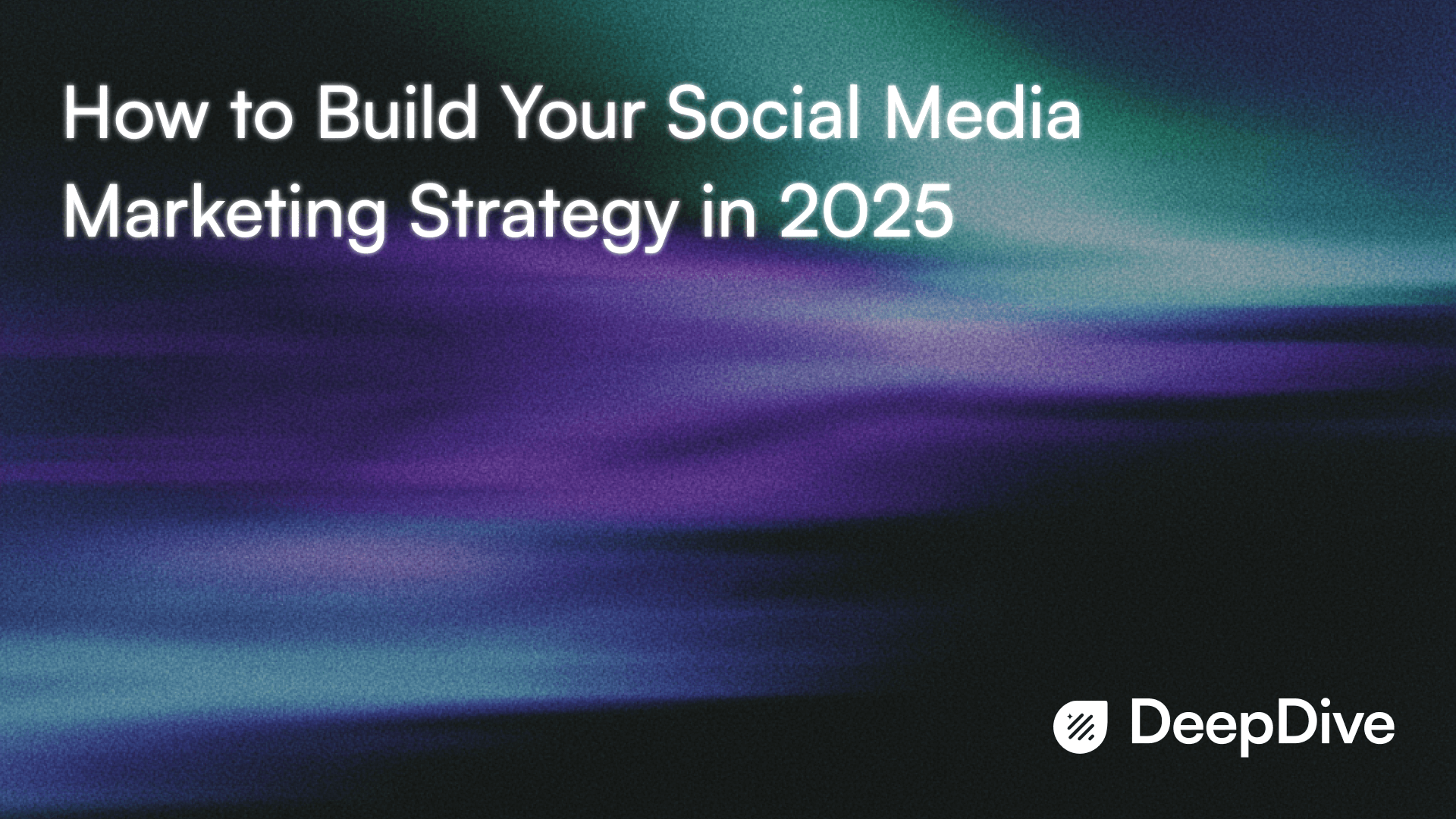We are excited to announce our $2M seed round led by Joa Capital.
Read Now

October 19, 2025
Syed Mohammad Sharfuzzaman Nayeem
Building a strong social media marketing strategy in 2025 is no longer optional; rather, it is the foundation for brand visibility, customer engagement, and revenue growth. With AI-driven algorithms, short-form video dominance, and tighter competition for attention, brands need a structured and data-backed approach.
Before we jump in, if you are wondering what is social media marketing, it’s the process of using platforms like Instagram, TikTok, LinkedIn, and X to promote products, engage with customers, and drive business goals. The difference in 2025 is that success depends on personalization, real-time content, and consistency.
In this guide, we will break down every step of creating a strategy for social media marketing, from audience research to measurement, with tools, frameworks, and social media marketing examples to inspire you.
A clear social media marketing strategy starts with specific, measurable objectives. Whether it’s increasing website traffic, boosting sales, or growing brand awareness, your goals should tie directly to business outcomes.
Example: A DTC skincare brand might aim for a 20% increase in Instagram engagement and a 15% lift in TikTok-driven sales within six months.
Common KPIs to track:

Understanding your target audience is key to any strategy for social media marketing. Use analytics tools and social listening platforms to answer these questions:
Mapping out personas ensures your content speaks directly to audience needs. Because when you know your audience and what they want, you can serve solutions in a more personalized way.
One-size-fits-all is the wrong approach to take in 2025. Especially when you are dealing with such a dynamic audience.
The choice depends on where your audience spends the most time and what kind of content they prefer.
Platform focus in 2025:

Your content mix determines how well your social media marketing strategy performs. There’s no ideal mix. For instance, you can follow the 70 30 20 rule:
Social media marketing examples include:
Customer testimonials fall under earned media, where the customer is vouching for your brand without you having to spend any money. For any brand this is hard to achieve but highly rewarding.
A social media strategy template keeps your posting schedule organized and ensures message alignment. Consistency saves time, which you can spend on brainstorming social media content. Include:
Tools like Notion, Trello, and Asana help manage this visually and collaboratively.
Consistent themes, frequency, or timelines keep you relevant. Also, there is less confusion and more credibility for you.
Open LinkedIn or any other social media platform, and you will see tons of posts on “AI this” and “AI that.” Good or bad, AI is relevant and immensely helpful.
If your budget has space for AI, use it to

Social media success in 2025 is built on relationships. Reply to comments, ask questions in your captions, and join relevant conversations. Engagement signals boost reach in algorithms, turning passive viewers into loyal followers.
Brands use some common tricks to increase engagement with their audience, such as “Comment below your comfort food” or “Share your funnest memories with your friends on this friendship day. The best one gets a 30% discount!”
Don’t sell yourself short just because you are spending money on advertising. Every brand has to do this. Even the best organic content benefits from paid amplification. Use social ads to:
If you are a new brand, you will have to rely on paid media in the initial stages of your business.
A social media marketing strategy is only effective if you monitor results. Review analytics weekly to identify:
Analyze the data and find relations between the output and various variables, and then optimize your strategies.
Studying social media marketing examples from top brands reveals patterns:
These examples show the power of consistent brand voice and platform-native creativity.
If you still ask what social media marketing is and why it matters, the answer is simple: it’s where your customers already are. A strong strategy for social media marketing creates multiple touchpoints, builds trust, and drives conversions without relying solely on paid ads.
Creating a social media marketing strategy in 2025 requires clarity, creativity, and data-backed decisions. By setting clear goals, understanding your audience, leveraging AI tools, and learning from proven social media marketing examples, you can stand out in an overcrowded digital space.
Allocate 50% of your content to engage your audience, 30% to share and create relevant content, and 20% to direct promotions. So, you are delivering value without overwhelming your audience with too many ads.
This engagement framework suggests that you engage with 5 new people, respond to 5 existing followers, and interact with 5 pieces of relevant content daily. This will help you increase your visibility and build relationships at the same time.
As of 2025, TikTok remains the fastest-growing platform globally, dominating short-form video content. However, Instagram continues to be a leading choice for both brands and influencers, while LinkedIn holds strong for B2B networking and thought leadership. Platform choice still depends on your audience and business goals.
The top marketing trends in 2025 include:
Click here for more!
Discover How Audience Intelligence can help your brand grow